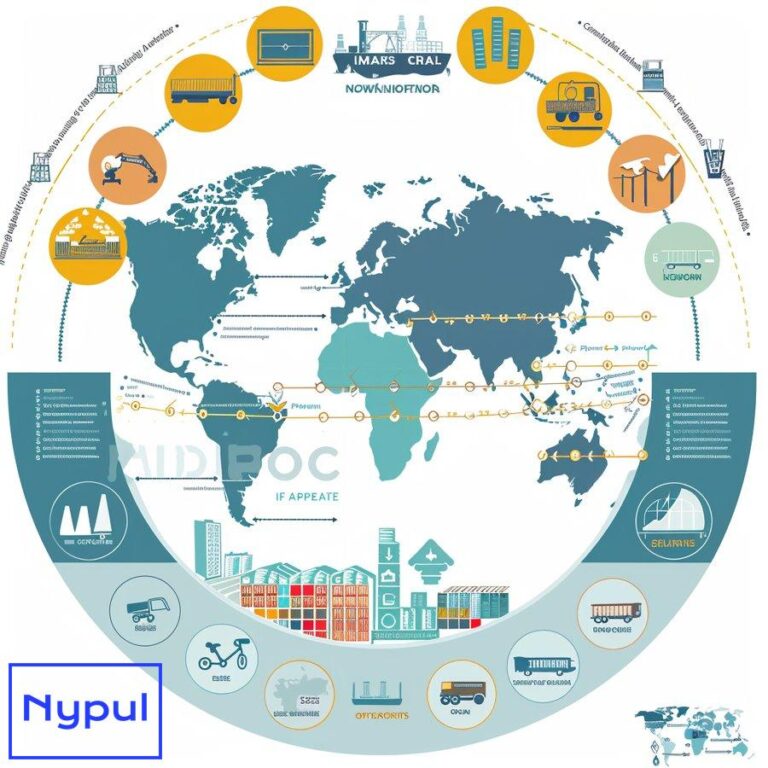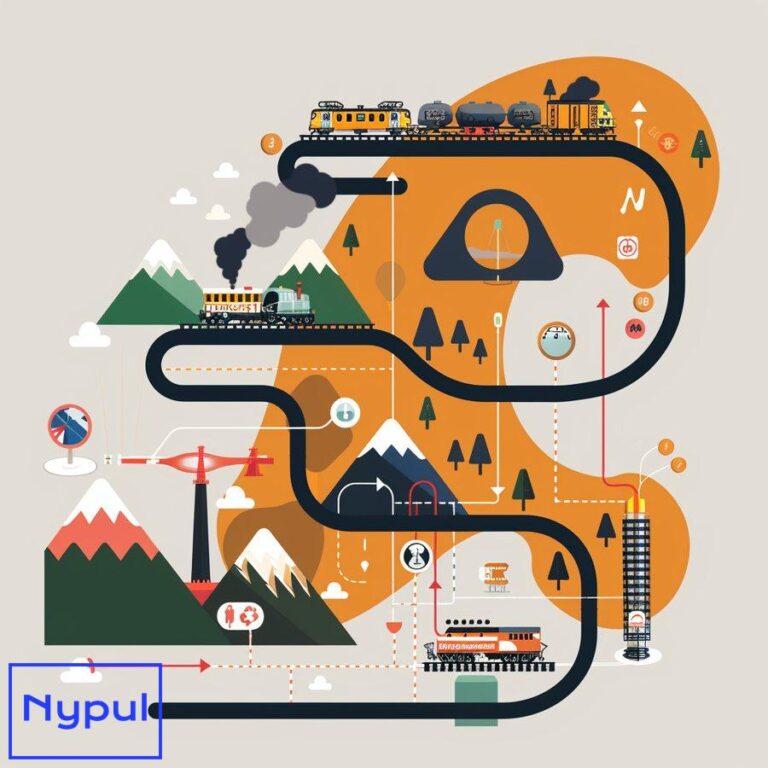What Are the Guidelines for Managing Time While Driving
Why is time management crucial for drivers?
Effective time management is essential for drivers, particularly in the trucking and logistics sectors. It directly impacts productivity, safety, and overall job satisfaction. By managing time effectively, drivers can ensure timely deliveries, maintain compliance with regulations, and enhance their professional reputation.
Importance of Time Management

-
Timely Deliveries: Meeting delivery deadlines is crucial in the trucking industry. Customers rely on drivers to transport goods within specified timeframes. Efficient time management ensures that drivers can meet these expectations consistently.
-
Stress Reduction: A well-structured schedule alleviates stress. Drivers who manage their time effectively have a clearer understanding of their responsibilities and tasks, which fosters a more organized work environment.
-
Safety Promotion: Properly managing driving hours and incorporating adequate rest breaks helps prevent fatigue-related accidents. Fatigued driving poses significant risks to both the driver and other road users.
-
Professional Reputation: Consistently meeting deadlines builds a positive reputation among clients and employers. A good reputation can lead to more opportunities and better job security in the competitive trucking industry.
Time management is not just about efficiency; it’s about creating a balanced approach that prioritizes safety, health, and professional growth.
How can drivers effectively plan their routes?
Route planning is a fundamental aspect of time management for drivers. By planning routes effectively, drivers can minimize delays, reduce fuel consumption, and enhance overall productivity.

Key Considerations for Route Planning
-
Use of Technology: GPS devices and mapping applications like Google Maps or Waze provide real-time traffic updates, alternative routes, and estimated travel times. These tools are invaluable for avoiding congested areas and delays.
-
Traffic Patterns: Understanding peak traffic hours in various regions allows drivers to schedule trips during less congested times. This foresight can significantly reduce travel time.
-
Pre-trip Inspections: Conducting thorough pre-trip inspections ensures that vehicles are in optimal condition before hitting the road. This proactive measure helps prevent breakdowns that could derail schedules.
-
Multiple Stops Planning: When planning routes with multiple delivery points, drivers should organize stops logically to minimize backtracking and unnecessary detours.
| Route Planning Tips | Description |
|---|---|
| Use GPS & Mapping Tools | Leverage technology for real-time updates. |
| Analyze Traffic Patterns | Schedule trips during off-peak hours. |
| Conduct Pre-trip Inspections | Ensure vehicle readiness to avoid delays. |
| Organize Multiple Stops | Plan stops in a logical sequence to save time. |
Effective route planning not only saves time but also enhances safety by allowing drivers to avoid high-risk areas during peak traffic times.
What strategies help set realistic time expectations?
Setting realistic time expectations is crucial for maintaining schedules while ensuring safety. Drivers must consider various factors that could impact travel times.
Factors Influencing Time Expectations
-
Distance and Terrain: The distance between stops and the type of terrain (hilly, flat, urban) can significantly affect driving times. Drivers should account for these variables when estimating arrival times.
-
Weather Conditions: Adverse weather can slow down travel significantly. Checking weather forecasts before embarking on a trip allows drivers to adjust their schedules accordingly.
-
Loading/Unloading Times: Anticipating the time required for loading and unloading cargo is essential for accurate scheduling. Drivers should communicate with dispatchers to understand expected wait times at docks or warehouses.
-
Rest Breaks: Incorporating mandatory rest breaks into the schedule is vital for compliance with Hours of Service (HOS) regulations and ensuring driver alertness.
By considering these factors, drivers can set more realistic expectations that accommodate potential delays while promoting safety.
How should drivers prioritize tasks and deliveries?
Prioritizing tasks effectively allows drivers to manage their workload efficiently while ensuring timely deliveries.
Task Prioritization Strategies
-
Daily Planning: At the start of each day, drivers should create a list of tasks based on urgency and importance. Tasks related to immediate deliveries should take precedence over less urgent activities.
-
Communication with Dispatchers: Regular communication with dispatchers helps drivers stay informed about any changes in delivery schedules or priorities. This collaboration ensures that everyone is on the same page regarding task urgency.
-
Flexibility in Scheduling: While it’s essential to have a plan, being adaptable to changing circumstances—such as unexpected delays or urgent requests—can significantly enhance operational efficiency.
-
Utilizing Technology: Digital tools can assist in tracking tasks and deadlines, helping drivers stay organized and focused on priorities throughout their shifts.
| Task Management Techniques | Description |
|---|---|
| Daily Planning | Create a prioritized task list at the start of each day. |
| Communication | Maintain regular contact with dispatchers for updates. |
| Flexibility | Adapt schedules based on real-time changes or emergencies. |
| Technology Utilization | Use digital tools for tracking tasks efficiently. |
By implementing these strategies, drivers can optimize their daily operations while ensuring that critical tasks are completed on time.
What are the key regulations for maximizing driving hours?
Understanding regulations surrounding driving hours is crucial for compliance and safety in the trucking industry.
Hours of Service (HOS) Regulations
The Federal Motor Carrier Safety Administration (FMCSA) regulates driving hours through HOS rules designed to prevent driver fatigue:
-
14-Hour Rule: Drivers may operate a vehicle for up to 14 hours after coming on duty, but this includes all on-duty activities—not just driving.
-
11-Hour Driving Limit: Within those 14 hours, drivers are allowed a maximum of 11 hours of actual driving time after taking at least 10 consecutive hours off duty.
-
30-Minute Break Requirement: Drivers must take a 30-minute break after 8 cumulative hours of driving without interruption to rest before continuing their journey.
-
Weekly Limits: Drivers cannot exceed 60 hours of driving in 7 days or 70 hours in 8 days, depending on their work schedule.
Adhering to these regulations not only ensures compliance but also promotes safety by reducing fatigue-related incidents on the road.
How can drivers minimize distractions on the road?
Minimizing distractions is essential for maintaining focus while driving, which directly impacts safety and efficiency.

Strategies to Reduce Distractions
-
Limit Mobile Device Use: Using mobile devices while driving can be highly distracting. Drivers should utilize hands-free devices if communication is necessary but should limit conversations during critical driving moments.
-
Organize Cab Space: Keeping the cab organized minimizes distractions caused by searching for items while driving. A clutter-free environment allows for better focus on the road ahead.
-
Plan Stops Ahead of Time: By planning where to stop ahead of time—whether for fuel or food—drivers can reduce impulsive decisions that lead to distractions during drives.
-
Stay Hydrated but Manage Breaks Wisely: While staying hydrated is important, excessive fluid intake may necessitate frequent restroom breaks that disrupt focus. Balancing hydration with planned stops helps maintain concentration on long hauls.
| Distraction Minimization Techniques | Description |
|---|---|
| Limit Mobile Device Use | Utilize hands-free devices; avoid distractions during critical moments. |
| Organize Cab Space | Maintain a clutter-free environment for better focus. |
| Plan Stops Ahead | Reduce impulsive decisions by pre-planning stops. |
| Balance Hydration | Stay hydrated while managing break frequency effectively. |
By implementing these strategies, drivers can enhance their focus on the road, contributing to safer driving conditions overall.
What techniques optimize non-driving time usage?
Optimizing non-driving time allows drivers to maximize productivity even when they are not behind the wheel.
Effective Non-driving Time Management
-
Utilize Waiting Time Productively: While waiting at loading docks or during breaks, drivers can complete paperwork or plan upcoming routes using available technology such as tablets or smartphones.
-
Engage in Physical Activity During Breaks: Taking short walks or stretching during breaks helps maintain physical health and mental alertness—essential factors when returning to driving duties.
-
Meal Preparation Strategies: Preparing meals ahead of time reduces downtime spent searching for food during trips. Stocking healthy snacks also minimizes unhealthy eating habits often associated with convenience store stops.
-
Continuous Learning Opportunities: Using non-driving time to engage with educational materials—such as podcasts or audiobooks related to logistics—can enhance skills relevant to the industry while keeping drivers mentally engaged during downtime.
| Non-driving Time Optimization Techniques | Description |
|---|---|
| Productive Waiting Time | Complete paperwork or plan routes while waiting at docks. |
| Physical Activity During Breaks | Engage in stretching or walking exercises during breaks. |
| Meal Preparation Strategies | Prepare meals ahead of time; stock healthy snacks for convenience. |
| Continuous Learning Opportunities | Listen to educational materials related to logistics during downtime. |
By effectively utilizing non-driving time, drivers can enhance their overall productivity while maintaining their health and well-being on the road.
How can technology improve driver time management?
Technology plays an increasingly vital role in enhancing driver time management capabilities within logistics operations.
Technological Tools for Improved Time Management
-
GPS Navigation Systems: Advanced GPS systems provide real-time traffic updates and route optimization features that help avoid delays due to congestion or road closures.
-
Electronic Logging Devices (ELDs): ELDs automate recording driving hours and ensure compliance with HOS regulations by tracking on-duty status accurately without manual logging errors.
-
Mobile Applications for Route Planning: Apps like Waze offer live traffic updates and alternative route suggestions based on current conditions—allowing drivers to adapt quickly when unforeseen circumstances arise during trips.
-
Fleet Management Software Solutions: Comprehensive fleet management systems allow companies to monitor driver performance metrics such as speed patterns or adherence to schedules—enabling targeted training opportunities based on data insights collected over time.
By leveraging these technological advancements effectively, both individual drivers and logistics companies can enhance operational efficiency while ensuring compliance with industry regulations regarding safe driving practices.
What habits contribute to better time management for drivers?

Developing good habits is essential for improving overall time management skills among truck drivers.
Healthy Sleep Routines
Establishing consistent sleep routines promotes better rest quality—crucial given the demanding nature of long-haul trucking jobs.
Pre-trip Preparation
Taking adequate time before each trip allows drivers to inspect vehicles thoroughly before departure—ensuring they’re ready without delays caused by mechanical issues later down the line.
Setting Daily Goals
Creating clear daily goals provides direction throughout each shift; knowing what needs accomplishing helps maintain focus amidst distractions.
Regular Self-assessment
Conducting regular self-assessments regarding performance allows identification of areas needing improvement; this reflective practice fosters continuous growth within professional roles.
By cultivating these habits over time through intentional practice combined with feedback mechanisms from supervisors/dispatchers alike will yield significant improvements in overall effectiveness!
How should drivers adapt to changing road conditions?
Adaptability is crucial when facing unexpected changes in road conditions—whether due adverse weather patterns or construction zones along routes taken regularly.
Monitoring Weather Reports
Regularly checking weather forecasts enables proactive adjustments regarding timing/delays associated with inclement weather conditions impacting travel plans.
Utilizing Real-time Traffic Updates
Leveraging real-time traffic updates via GPS navigation systems/applications aids decision-making processes related rerouting around congested areas quickly!
Flexible Scheduling Practices
Maintaining flexibility within scheduling practices allows room adjustments when necessary; prioritizing urgent deliveries while accommodating unforeseen circumstances enhances overall efficiency.
Communication with Dispatch Teams
Keeping open lines communication between dispatch teams ensures everyone remains informed about potential issues arising along routes taken—allowing collaborative problem-solving efforts aimed minimizing disruptions experienced collectively!
By embracing adaptability through these strategies outlined above will empower truckers navigate challenges successfully while ensuring continued productivity despite unpredictable nature inherent logistics operations!
This draft provides comprehensive coverage of effective strategies related managing time while driving within context logistics/trucking industries!




